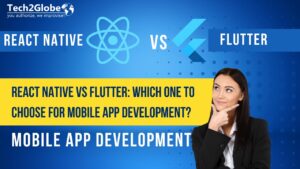For owners of Shopify stores, it is paramount to leverage mobile applications built with WebView integration to display their storefront and optimize performance and user experience within that framework. A “mobile bridge”, developed by a Shopify website development company, does the job of acting as a communication layer between the native mobile application and the WebView framework, which helps it enable enhancements that would not have been possible using a standard version of WebView implementation.
Mobile Bridge: Making WebViews Feel Native
Here are ways how a Mobile Bridge in Shopify webiste development can significantly and easily improve the WebView performance and UX for your Shopify app:
Performance Enhancements:
- Native Caching Mechanism
Problem: Standard caching systems for WebView may not prove to be as persistent or efficient as socials that are native to caching. If you are repeatedly loading the same assets such as CSS, images, or JavaScript, it can lead to the page becoming slow while loading and also will increase data usage.
Mobile Bridge Solution: Shopify experts for hire using the bridge system can easily facilitate the caching system for assets that are static and can also support dynamic content by using native storage systems. When a WebView requests any kind of resource, the bridge will first check the availability of that asset in the native caching systems and serve it instantly, effectively reducing all load times.
- Preloading and prefetching
Problem: If the loading of the WebView page is delayed when the user is trying to navigate to the new page, it can result in noticeable delays in loading periods.
Mobile Bridge Solution: The native application will make every effort to anticipate the user’s next action when hovering over a link, enabling it to preload the page and create the illusion of no loading time.
- Asynchronous communication and background tasks
Problem: Excessive use of JavaScript or API calls within the WebView can block the UI threads, making the application unresponsive and potentially leading to a forced closure.
Mobile Bridge Solution: A Shopify website development company that uses the bridge can easily offload many different tasks to the native app. Things such as complex calculations, data processing, and communications with native device features can be handled wisely in the native device. Then the results will be passed back to the WebView asynchronously.
- Optimized resource loading
Problem: WebViews may not always function efficiently in managing resource loading. They may download unnecessary assets or even load them in a blocky manner.
Mobile Bridge Solution: The native application can easily intercept resource requests when they are in transit and optimize their loading process by prioritizing critical resources, lazy loading every image behind the curtains, and even substituting WebView components with much more performant native UI elements designed for very specific tasks.
- Custom Network Handling
Problem: WebViews have a significant downside: They rely on the operating system’s network stack, which may not be ready and optimized for every scenario.
Mobile Bridge Solution: The native application can try to implement custom network handling, possibly by integrating much more efficient libraries and pooling connections to improve data transfer speed and the seamless and worry-free reliability that you can avail yourself of within the WebView framework.
User Experience Enhancements
- Seamless Native Integrations
Problem: WebViews can feel isolated from accessing the features of the native device and following established UI conventions.
Mobile Bridge Solution: Implementing the bridge during Shopify Website development will allow for a deeper integration with native application functionalities such as push notifications, displaying native UI elements, and allowing access to device hardware such as the high-resolution camera, high-accuracy GPS, or even the biometric authentication options that come with the handset.
- Improved Navigation
Problem: Occasionally, after extended usage, WebView may experience minor performance issues, causing it to feel sluggish or lose access to native gestures.
Mobile Bridge Solution: The native application will easily be able to intercept navigation events and smooth out the transitions to make the experience feel more fluid. Bridge can also implement custom behavior for the back button and even offer access to native navigation menus besides the already available WebView.
- Enhanced User Input
Problem: WebView experiences with handling keyboard and other form interaction can offer a disconnect in fluidity when compared to native experiences.
Mobile Bridge Solution: The bridge implementation by Shopify experts for hire can easily facilitate better management of keyboard, custom input field interactions, and seamless integration with form validation in native experiences.
- Offline Access and Data Synchronization
Problem: To run a WebView, users may need to provide the native app access to the internet at all times.
Mobile Bridge Solution: The native application can be implemented with a caching system that stores essential data to support functionality, even without an internet connection, allowing users to use specific parts of the semi-functional application, or even the online store even when the handset is not connected to the internet. The bridge can then store the interactions and settings and then do data synchronization when the device regains connectivity to the internet.
- Custom error handling and feedback
Problem: WebView error messages can be very generic and unhelpful because they are riddled with codes or language that normal people without technical knowledge cannot understand properly.
Mobile Bridge Solution: The native application can easily intercept and decode errors within the WebView framework and then display an error message that is more comprehensible and user-friendly or provide native solutions for issues that prove to be very common.
- Personalized Experiences:
Problem: When a WebView framework tries to deliver truly personalized experiences solely with a WebView, it can be very challenging.
Mobile Bridge Solution: The native application can easily try to leverage information that is specific to every device or store user preferences natively, then pass that data to the WebView framework via the bridge, leading to more tailored content and offers.
In Conclusion
So, now you know how Mobile Bridge can elevate the user experience of Shopify apps, not just for performance but also for user experience. We hope that this article was persuasive enough for you to avail yourself of these services and forget all the worries about optimizing every single thing individually.
FAQs
What is the explanation of a Mobile Bridge in the context of Shopify apps?
In the context of Shopify applications, a Mobile Bridge is a middle-ground technology that uses a set of techniques to facilitate seamless interaction between the native mobile application and the embedded WebView storefront component, which makes the Shopify technology work.
How does a seamless Mobile Bridge attempt to improve WebView UX in Shopify apps?
A mobile bridge is a fascinating application that tries to significantly enhance the user experience of a person using WebView in every application associated with Shopify by segmenting every limitation and challenge that comes with simply implementing a website within the native container. This program achieves this by enabling seamless interaction and data transfer between the WebView component and the native mobile application functionality.
Can I make use of a Mobile Bridge with existing Shopify themes and apps?
Yes, you can seamlessly and obviously make use of a mobile bridge with some of the existing Shopify themes and applications that you have already gotten developed for yourself. Still, the seamlessness levels of this fascinating integration and the effort necessary to put behind it will be variable. They will depend on your plans for the utilization of the bridge.
Does using a mobile bridge affect Shopify app speed or security?
Yes, implementing a mobile bridge system in your Shopify application will significantly affect speed and security. The bridge’s implementation and use will determine its positive or negative impact.
Is the amazing technology of Mobile Bridges compatible with both iOS and Android Shopify apps?
Yes, a well-designed mobile bridge can be very compatible with both iOS and Android Shopify applications. Still, you have to pay crucial attention to the fact that the implementation of this system will be platform-specific, and you will need to write native code tailored to the uniqueness of each operating system.










